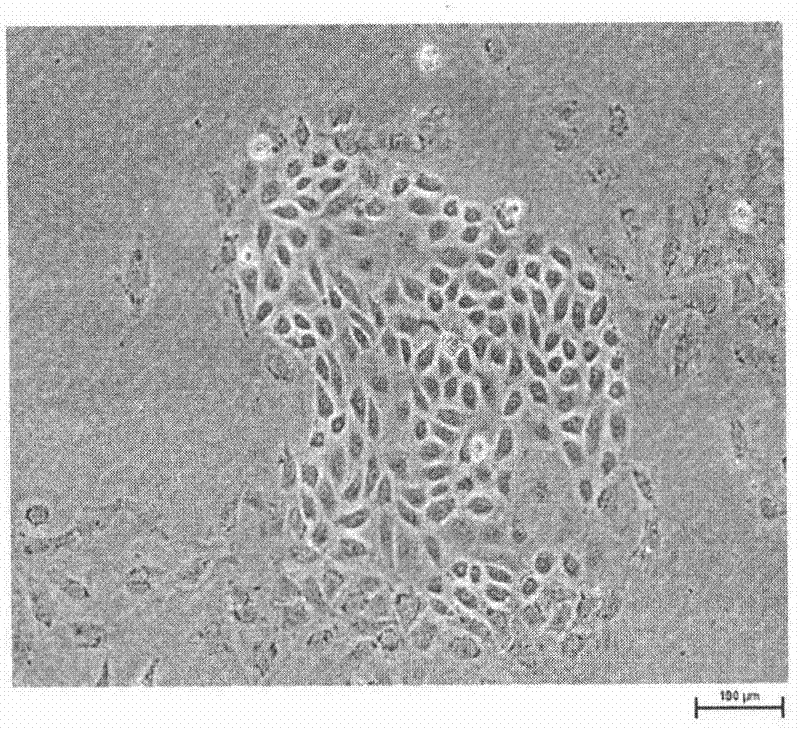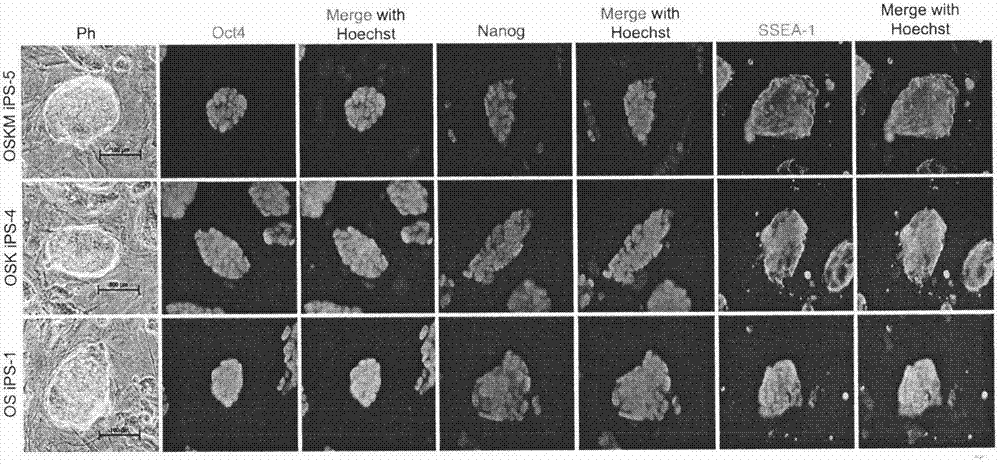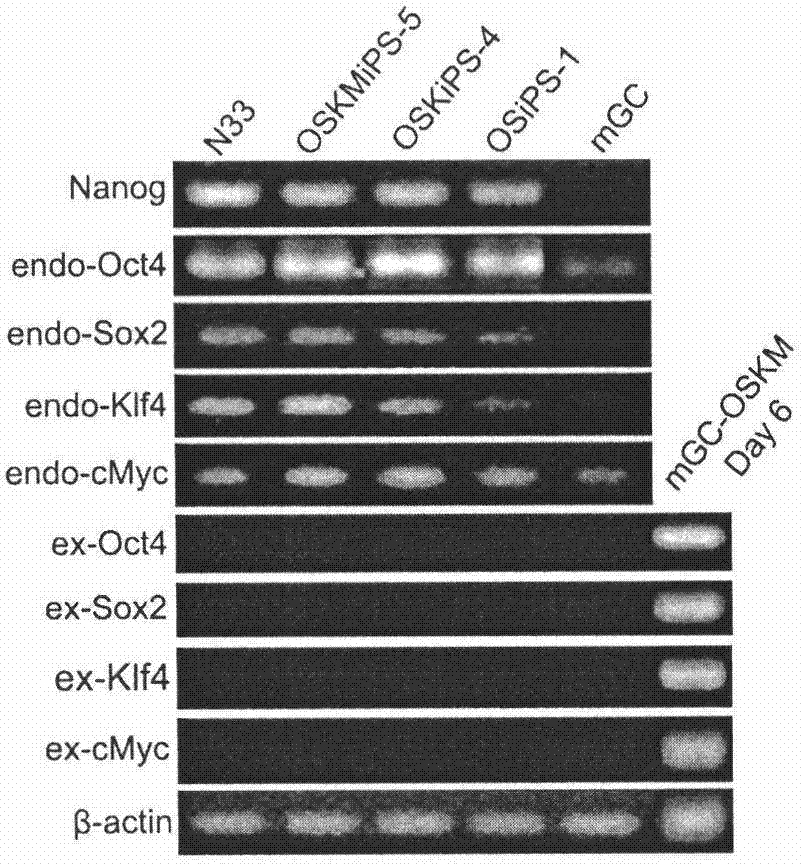Method for converting ovarian granular cells into multipotential stem cells
A technology of pluripotent stem cells and granule cells, applied in the fields of biology and new medicine, can solve problems such as carcinogenesis and iPS cell safety, and achieve the effect of improving the induction efficiency
- Summary
- Abstract
- Description
- Claims
- Application Information
AI Technical Summary
Problems solved by technology
Method used
Image
Examples
Embodiment Construction
[0018] The method of converting ovarian granulosa cells into pluripotent stem cells can be widely applied to human, mouse, pig and other species. Our method has been successfully applied to mice and pigs, and the success in mice and pigs also validates our method.
[0019] Ovarian granulosa cells are isolated and transformed into pluripotent stem cells by reprogramming factors or small molecular compounds after adherence. Identification of the obtained pluripotent stem cells, including activation of endogenous pluripotency genes and silencing of exogenous genes, expression of pluripotency markers, in vivo differentiation (teratoma formation) and in vitro differentiation (embryoid body differentiation) The ability to form chimeras and germline transfer. The obtained pluripotent stem cells can be widely used in human medical clinics, transgenic applications, and the like.
PUM
 Login to View More
Login to View More Abstract
Description
Claims
Application Information
 Login to View More
Login to View More - Generate Ideas
- Intellectual Property
- Life Sciences
- Materials
- Tech Scout
- Unparalleled Data Quality
- Higher Quality Content
- 60% Fewer Hallucinations
Browse by: Latest US Patents, China's latest patents, Technical Efficacy Thesaurus, Application Domain, Technology Topic, Popular Technical Reports.
© 2025 PatSnap. All rights reserved.Legal|Privacy policy|Modern Slavery Act Transparency Statement|Sitemap|About US| Contact US: help@patsnap.com



